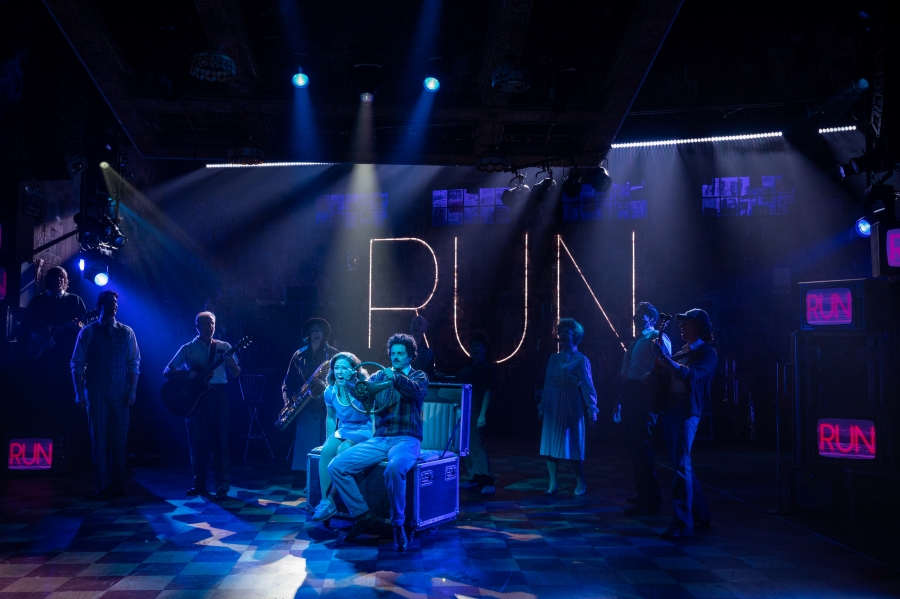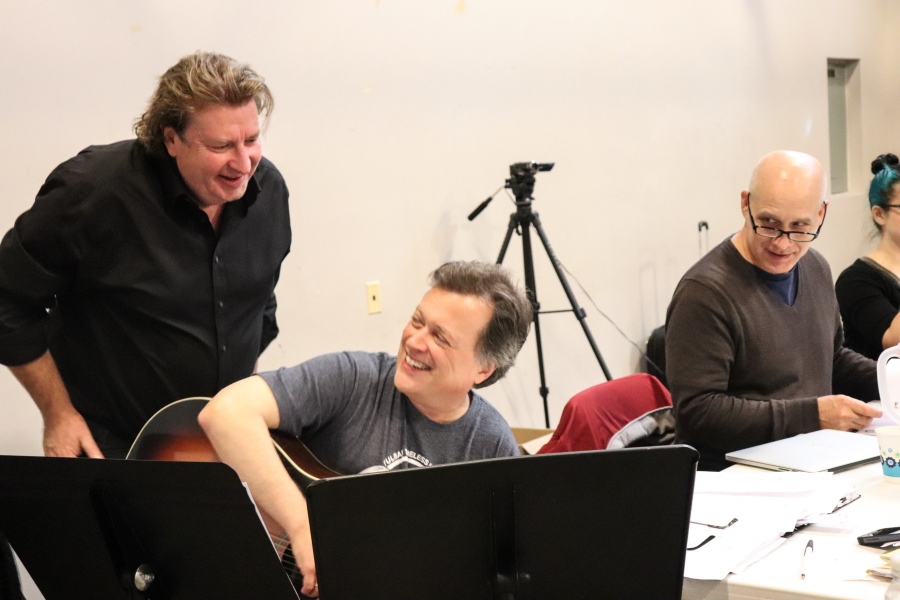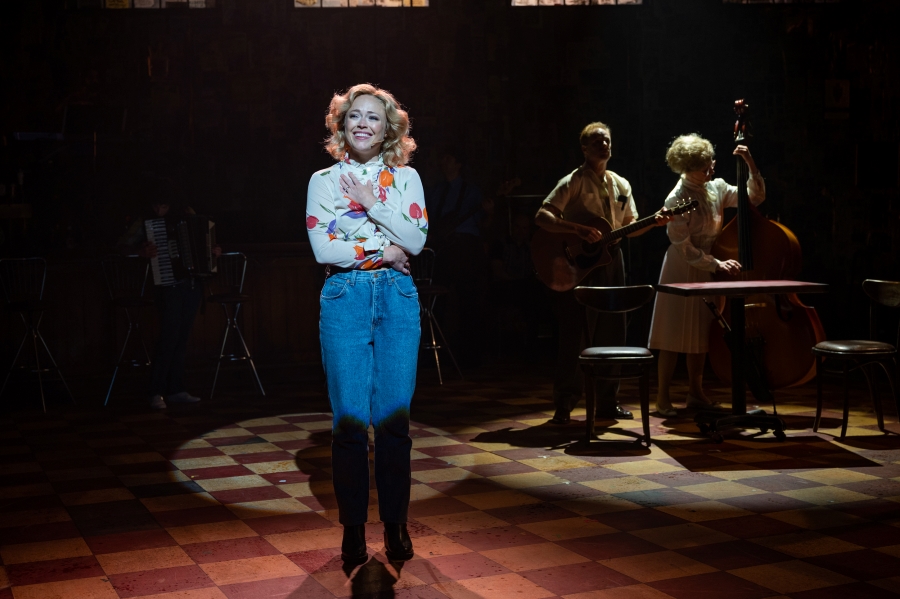Do you know the story of Laurie “Bambi” Bembenek? Chances are, especially if you’re from the Milwaukee area, you may remember hearing about Bembenek, the former Milwaukee Police Department officer and Playboy Club bunny who was convicted for the 1981 murder of Christine Schultz, the ex-wife of Bembenek’s husband Elfred. Bembenek’s story went national after she escaped from a Wisconsin prison after serving 10 years. As publicity around her escape swirled, a slogan began to crop up: “Run, Bambi, Run!” Recaptured in Ontario, Bembenek pleaded no contest to second-degree murder in a retrial and was released with 10 years of probation.
“Next to Jeffrey Dahmer, in Milwaukee, this is probably the most famous criminal case ever,” said Milwaukee Repertory Theater artistic director Mark Clements.
With Clements directing, Run Bambi Run, Milwaukee Rep’s world premiere musical adaptation of Bembenek’s story, is set to run Sept. 22-Oct. 22. With a book by Lombardi playwright Eric Simonson and songs by Gordon Gano of ’80s/’90s folk punk band the Violent Femmes, the show follows the life of the young South Side Polish American girl as she experiences love, betrayal, and a conviction for a murder she claims not to have committed. But as the creators of this new musical approach this well-known story, retelling it in the city where the story first took shape, they’re looking to dive past the attention-grabbing headlines and empathetically lift the human underneath the sensation.
“It’s been so special doing it in the city,” said Erika Olson, who is portraying Bembenek in the new musical. “It has a different weight about it. It’s got so many familial ties here. Even just talking to locals who were around during that time, they all know the story. People care a lot about the way it’s being told.”
The musical originally began to take shape in the second year of Clements’s tenure as Milwaukee Rep artistic director. The Green Bay Packers had just won the 2011 Super Bowl, and Simonson’s play about legendary Packers head coach Vince Lombardi was winding down its Broadway run. A regional premiere of Lombardi was a natural fit for Milwaukee Rep’s 2011-12 season. At the same time, Clements said, he was looking for ways for the theatre could produce more world premiere works, so he asked Simonson what the playwright was interested in tackling next. Considering the local audience, Simonson mentioned Lawrencia Bembenek’s story. Clements, a Brit who didn’t grow up in Milwaukee, admitted that he couldn’t remember why the name and story rang a bell, but that somewhere in the back of his mind he did remember, “Run, Bambi, Run.”
“That’s one story that just fascinated me from the start,” said Simonson, who was born in Milwaukee. “I lived through it. My sister was fascinated with it. I got all the updates. It entered into the folklore of Wisconsin and Milwaukee.”

Bembenek’s story spread well beyond the local community, particularly after her dramatic escape. Bembenek even made an appearance on American’s Most Wanted. A 1991 Vanity Fair article headlined “Was Bambi Framed?” capped the swarm of interest from news outlets, from Inside Edition flying in Bembenek’s parents for interviews to 60 Minutes “schmoozing one of the four authors currently penning Bembenek biographies.” Bembenek would go on to write about her experience in Woman on Trial, with her story memorialized in television movies and even, in 2022, a true crime podcast, Vanessa Grigoriadis’ Run, Bambi, Run.
As Simonson considered bringing the story to the stage, he said he never saw it as a play, which felt too similar to what movies and documentaries were already bringing to the table. He saw the story as one “ripe for a musical treatment.”
“The emotions are pretty raw,” Simonson said. “They’re pretty visceral and heightened.”
When Clements asked who Simonson heard crafting the music, Simonson’s first thought was Gordon Gano, singer, guitarist, and songwriter of the Violent Femmes, who came up through the Milwaukee scene to national fame with their unique brand of folk punk and alternative rock. The partnership made perfect sense, and Gano was immediately interested. After all, he had grown up with musical theatre, with actor parents and the soundtracks of classic musicals playing throughout his childhood. Even his mother—a long time ago, by Gano’s recollection—was saying he should be writing musicals. Still, he said, he wanted to make sure it was going to be the right fit.
“One of the early things I said was that I wasn’t interested in, ‘Let’s look at a story and see where’s the best place to put “Blister in the Sun,”‘” Gano said, referring to the 1983 Violent Femmes hit, as well as to the lineage of musicals that use pre-existing hits to tell stage stories. “That’s a different thing than what I was excited about, which would be writing all new songs specifically for a story and characters.”

Gano wound up weaving a variety of styles into his music for Run Bambi Run, a show where the cast of actor-musicians will serve as their own band. There’s a recognizable feel of ‘80s punk, of course, but also some country, some acoustic, some showstoppers. Gano even looked for ways to weave Bembenek’s Polish American heritage into the music.
“That style of music is so—it’s really about being alive,” Olson said of Gano’s music. “That’s kind of the heart of this show: fighting for your survival and your freedom.”
As the creative team dove into their research, they read firsthand accounts and newspaper articles about Bembenek’s life, and they referred to other retellings of the story. Simonson said that while many people in the community seem to knew the broad strokes of Bembenek’s case, very few know all the details. For instance, Gano, who was touring the country with Violent Femmes while Bambi’s story played out in real time, was taken by the discovery that, after she was released from prison, she moved to Washington state and was all set to have an art show when the gallery burned down, destroying her paintings.
Most eye-opening for Clements and Olson, though, was looking into the details and shortcomings of Bembenek’s two trials. Bembenek maintained her innocence until she died in 2010, and during the first trial claimed she was being framed, possibly because she was suing the Milwaukee Police Department and alleging sexual discrimination. The Milwaukee Journal Sentinel obituary for Bembenek noted that “the largely circumstantial case was enough to convince a jury,” while also raising questions about the case, such as victim Christine Schultz’s son saying he saw a masked man with a red ponytail at the scene, or that Christine’s ex, Elfred Schultz, a 13-year MPD veteran, was allowed to be at the crime scene and search the house. Olson recalls reading about the trial and feeling convinced that Bembenek had suffered a grave injustice.
“That was a huge ‘aha’ moment for me,” Olson said. “Just like: This poor woman is being subjected to this corrupt system right now, and she’s so powerless.”

That gave Olson the key to Bembenek’s story, she said. It’s easy to be struck by the tragedy of this happening to someone in her early 20s, but Olson said that what she saw instead was Bembenek’s bravery, as she kept fighting a system that was trying to tear her down. Olson admires that perseverance and resilience, while noting that Bembenek was a fighter with a soft side—she was a tomboy who loved animals and painting.
“It’s worth telling that story to inspire other people to stand up and speak out,” Olson said. “It’s devastating that, at 22, her life was taken away from her, and then she had to spend the rest of her life trying to clear her name. It’s really heartbreaking, and I know there are so many stories like this. She is not the only one who has dealt with injustice with our government. It’s crazy.”
As the creative team workshopped the musical before the pandemic, Clements said they worked to make sure the musical felt empowering, rather than wallowing in how awful things got for Bembenek, or scoring comic points given the lurid details of the case. For his part, Gano—who hasn’t ruled out working on another musical in the future—said that he and Simonson worked to balance the horror and tragedy with comedy, while still making sure they’re telling a story centered around an awful murder and a dramatic escape in a respectful way.
“Some people might be surprised that what Eric’s written and what I’ve written—we think it’s a lot of fun,” said Gano. “There’s a lot of comedy in both of our writing,” as well as darker elements, but Gano sees no contradiction in that. “With what we write and how we write, we can include it almost simultaneously. I think that’s a lot of what life really is: It has the comedy and the tragedy and the most horrific, terrible things, and people can still find some way to laugh about some things.”
Olson said she hopes that if Bembenek were still alive, she’d feel honored by this retelling of her story (even she hated the nickname “Bambi”).
“Getting to be in Milwaukee and meeting locals and getting the vibe of what the heart of Milwaukee is, that’s been really helpful in trying to understand who Laurie was as a person,” Olson said. “At the end of the day, she was a girl from the South Side of Milwaukee. She was a normal girl.”
Jerald Raymond Pierce (he/him) is the Chicago Editor for American Theatre. jpierce@tcg.org


